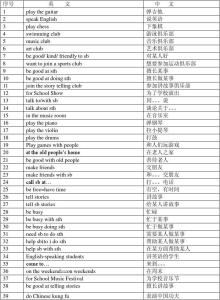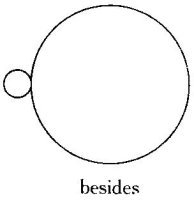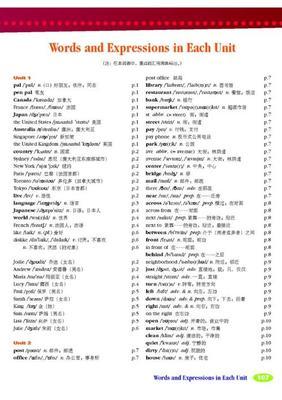英语 人教版 新目标英语 七年级下册 (unit 1-unit 6) 知识点同步更新中
前言:首先谢谢大家的支持!!!请多给我留言,多点赞,我好早日度过头条新手期,
就可以每天不受只能发一篇文章的限制了。
关于七年级知识点:我对这些知识点的讲解是远高于7年级水平的,因此同样适用于开学初二的同学,初三的学生看看也会有很大收获。

我从自己带的学生身上发现很多孩子的语法和词汇基础都是很薄弱的,所以才会有这篇文章的面世。
我更新文章没有任何私心,我给自己学生讲的内容全在这里了。好好利用吧,朋友们。
关于更新:由于我是在给我的学生进行同步授课,所以每天更新内容没办法满足所有朋友的要求,请见谅.
Yes英语培训学校专用授课资料老师编辑整理
主编人:申申老师 精品高分英语补习 有问题欢迎加我微信
申申老师七年级下册单元重点知识复习Unit 1 Can you play the guitar
1.have a swim游泳;go swimming去游泳
2.Painted 派生词:painter n.画家 painting n.画(注意与draw的区别:paint指用颜料等绘画;而draw指用钢笔、铅笔等画。)
3.注意区分:speak,say,talk和tell
4.Show 用法:show作动词,意为“表演,演出,出示……给某人看”,有时与介词搭配使用,
构成show sth. to sb.=show sb. sth.。show作名词,意为“展览,展出”。构成短语on show,意为“在展出”。
5.help sb.with sth. 在……方面帮助某人在help sb.with sth.结构中,with是介词,后面跟名词或动名词作宾语。该结构相当于help sb.do sth.。同义句转换I often help him do his homework.I often help him his homework.
6.be good with... 与……相处得好;与……合得来同义词组:get on well with
7.school show 学校公演show在这里用作名词,注意下列搭配:fashion show 时装表演;a flower show花展;game show智力竞赛节目;chat show(电视台)现场采访节目
8.Can you play the guitar?
你能弹吉他吗?
【剖】Can you...?用来询问对方能否做某事,意思是“你能/会……吗?”,
肯定回答用“Yes,I can.”否定回答用“No,I can’t.”
【拓】 can(能、会),may(可以;可能),must(必须)都是情态动词,后面跟动词原形。其否定结构在后面加上not,can not通常缩写为can’t;must not缩写为mustn’t;may not一般不缩写。
【剖】 此句为简单的选择疑问句,即提问者提供两种或两种以上情况,让对方从中作出选择的句子。它的基本结构是:一般疑问句 or 一般疑问句(后一部分
与前一部分相同的成分常常省略)。or连接的是两个并列的成分,要求词性一致。
1)回答时,不用yes或no,而是选择其中一种回答。2)在读法上,or的前一部分用升调,后一部分用降调。
“能”说“会”道的can
1.表示能力,通常指在体力或脑力方面的能力,意为“能;会”。He can speak English.他会说英语。
2.表示许可,意为“可以”,这时可以和may通用,但是比may较正式。Can I use your pen?我可以用你的钢笔吗?
3.表示可能性,意为“可能”,这时常出现在否定句中。如:It can’t be true.这不可能是真的。
4.表示提供帮助。如:Can you help me?你可以帮助我吗?
巧记不用冠词的几种情况:下列情况不用冠,名词之前代词限。
复数名词表泛指,球类学科和三餐。专有名词不可数,星期月份季节前。交通手段和节日,习语称谓和头衔。
申申老师七年级下册单元重点知识复习Unit 2 What time do you go to school?
重点短语:get up 起床get home到达家中get to work到达工作岗位make breakfast做早饭make a shower schedule 做一个洗澡的安排practice guitar 练吉它leave home 离家take a shower = have a shower 洗淋浴澡take the Number 17 bus to the Hotel乘17路公共汽车去旅馆go to class 上课go to school 上学go to work 上班(反义词 go home)
have breakfast/dinner/lunch 吃早、晚、午饭go to bed 睡觉(反义词get up)put on 穿衣服(反义词take off)
do one’s homework 做家庭作业tell sb. about sth. 告诉某人某事know about sth. 知道某方面的情况
love to do = like to do 喜欢干某事listen to the early morning news on radio听电台早间新闻
watch the early morning news on TV看电视早间新闻around six o’clock 六点左右
in the morning 在早上in the afternoon 在下午in the evening 在晚上listen to
关于一般现在时。(语法重点)
(1)一般现在时态的意义是:①表示现在的特征或状态。如:He is at home today. 他今天在家。②表示经常性、习惯性的动作。常和频率副词always, often, usually及every day等表示时间的短语连用。如:I go to school at 7:00 every day. 我每天7点钟去上学。③表示主语具备的性格或能力。如:She likes pears very much. 她非常喜欢梨子。They speak English. 他们讲英语。(2)肯定陈述句:当主语是第一、二和第三人称复数时,谓语动词用原形。当主语是第三人称单数时,谓语动词用第三人称单数形式。例如:
①They stay at home on Sundays. 他们星期天呆在家。 ②He does his homework in the evening.
(3)否定句:当主语是第一、二及第三人称复数时,否定句借助助动词do+not,当主语是第三人称单数时,否定句借用does+not,并将动词第三人称单数还原。例如:
①They don’t stay at home on Sundays ②He doesn’t do his homework in the evening.他晚上不做作业。
(4)疑问句:当主语是第一、第二及第三人称复数时,疑问句在句首加Do。当主语是第三人称单数时,疑问句在句首加Does,并把谓语第三人称单数还原。例如:
①Do they stay at home on Sundays? ②Does he do his homework in the evening?
always, usually, often 和sometimes
这四个副词表示行动或动作的频率。频率最高的是always(总是),其次是usually(通常,总是),often(经常,时常),sometimes(有时),使用时要注意它们在句中的位置。由于频率副词表示的是经常性的、一般性的动作或情况,不是具体指某一次,因此常常和一般现在时连用,常位于行为动词前面,其他动词(指be动词、情态动词和助动词)的后面。本单元重点学习usually“通常”。
如:When do you usually get up? 你通常什么时候起床? I usually get up at six o’clock. 我通常六点起床。
What time does your sister usually get up? She usually gets up at 6:30她通常6:30起床。
listen to, hear和sound
△listen to意为“注意听”,表示有意识地去听,但不一定听得见什么,强调听的动作。(listen不及物,listen to及物)如: They are listening to the teacher. 他们在听老师说。
△hear意为“听见”,表示耳朵里听到了,但不一定有意识地听,强调听的结果。如: I’m sorry to hear that.
△sound意为“听起来,听上去”,可作连系动词,后接形容词作表语,还可以和like连用。
例如: The music sounds sweet. 这音乐听起来悦耳。
To get to work, he takes the number 17 bus to the Saite Hotel.
为了赶去上班,他要乘坐去赛特宾馆的17路公共汽车。
(1)to get to work 是动词不定式作目的状语。(2)take a bus 表示“乘坐公共汽车”。如:
I usually get up at around six fifteen. 我通常在大约六点一刻时起床。
around 表示“大约”的意思。 around 还可表示“在周围,在附近”,“朝……四处”。
如:There are around 100 people in the hall. She looks around the room. 她环顾一下室内。
School starts at nine o’clock. 九点钟学校开始上课。
start动词,表示“开始”的意思,相当于begin。
如:What time does the party start? 聚会几点开始?It starts to rain (raining). 开始下雨了。
申申老师七年级下册单元重点知识复习Unit 3 How do you get to school?
一、知识讲授
1、How do you get to school?
(1) how是疑问副词,意为“如何,怎样,用什么手段”。
本句为how引导的特殊疑问句,用以询问交通工具。
① take a/the 表示交通工具的名词,是动词短语,在句中作谓语。
② by 表示交通工具的单数名词或on/in a/the 表示交通工具的单数名词,是介词短语,作方式状语。
I walk./ I get to school on foot. I ride my bike./ I get to school by bike./ I get to school on my bike.
I take the bus./ I get to school by bus./ I get to school on the bus.
【注意】by 表示交通工具的单数名词时,名词前不能加任何冠词或者其他修饰词。
(2)get 在句中为不及物动词,意为“到达”,常与to连用,但是表示目的地的词是副词here、there、home等时,则不需要用介词to。They’ll get to Beijing at six tonight. I’ll get there on time. It takes about 25 minutes to walk.
It takes sb sometime to do sth.
【辨析】spend, cost, pay 与 take
(1)spend 的主语必须是人。常用于 spend…on sth或 spend…(in) doing sth.意为“某人花时间/金钱做某事”。
I spent 5 dollars on the book.
(2)cost的主语只能是事情。常用于sth cost sb some money意为“某物花费某人多少钱”。
The skirt costs her 200 yuan.
(3)pay的主语必须是人。长用于sb pay some money for sth.意为“某人为某物付款”。
He paid 1000 yuan for the TV set.
(4)take用于 It takes sb some time( money) to do sth. 句型中。
It took him seven days to make the big cake.
3、Then the early bus takes him to school. take…to…意为“把…带到…”
【辨析】take,bring与fetch
take意为“带走,拿走”,强调从说话地将人和物带走别的地方去bring意为“带走”,强调将某人或某物从别的地方带到说话地来fetch意为“去拿,去取”,即离开说话地去取某物后再回来,强调动作的往返4、How do students around the world get to school ?
(1)意为“环绕;围绕;绕过” eg: The earth moves around the sun.
(2)表示“在…四周” eg: There are many trees around the playground.
(3)表示“在…的附件 eg: Is there a park around here ?
(4)表示“大约”,常与数字连用 eg: He goes to school at around 8 o’colck.
5、In North America, not all student take the bus to school.
not all…这个结构所表达的意思通常是“部分否定”,意为“并不是所有的…都…”。
当not用于代词all, many, much, every, both前时,均属于部分否定。Not all that glitters is gold. 发光的并不都是金子。
6、I have a map but it’s in Chinese, and I only speak English.
in Chinese “用汉语”,in 表示“用…”,主要用“用某种语言,用某种材料,用某种方式”。I paid the bill in cash.
二、语法讲解——how引导的特殊疑问句
1、how引导的特殊疑问句提问交通方式。其答语分三种情况:
① take a/the 交通工具(单数)② by 交通工具(单数)③ on/in 限定词 交通工具
— How do you go to work every day? — I drive to work./I go to work by car./ I go to work in my car.
2、how far 用来提问距离,意为“多远”。其答语分为两种情况:
①用长度单位表示— How far is it from your home to the bus stop ?— It’s five kilometers.
②用时间表示— How far is the park from the shop ?— It’s ten minutes’ walk.
3、how long 用来提问时间,意为“多久”。— How long have you been inAmerica?— For two years.
申申老师七年级下册单元重点知识复习unit 4 Don’t eat in class.
1.祈使句的用法 相关口令 (祈使句特点)祈使句无主语,主语you常省去;动词原形谓语当,句首加don’t否定变;朗读应当用降调,句末常标感叹号。
●肯定结构:
1. Do型(即:动词原形( 宾语) 其它成分)。如:Please have a seat here. 请这边坐。
有的祈使句在意思明确的情况下,动词可省略。如:This way, please. = Go this way, please.
2. Be型(即:Be 表语(名词或形容词) 其它成分)。如:Be a good boy! 要做一个好孩子!
3. Let型(即:Let 宾语 动词原形 其它成分)。如:Let me help you. 让我来帮你。
●否定结构:
1. Do型和Be型的否定式都是在句首加don’t构成。如:Don’t forget me! 不要忘记我!Don’t be late for school!
2. Let型的否定式有两种:“Don’t let 宾语 动词原形 其它成分”和“Let 宾语
not 动词原形 其它成分”。如:Don’t let him go. / Let him not go. 别让他走。
有些可用no开头,表示禁止性祈使句。如:No smoking! 禁止吸烟!No fishing! 禁止钓鱼!
2.情态动词have to的用法
have to侧重于客观上的必要,作 “必须” “不得不做某事”讲。和其他情态动词的区别在于她具有人称的变化。
肯定句:sb have/has to 动词原形。主语为第三人称单数时用 has to,其他人称用have to.如,He has to work on Sunday.他不得不在周日工作。
2)否定句:sb don’t/doesn’t have to 动词原形。主语为第三人称单数时用doesn’t have to,其他人称用don’t have to.He doesn’t have to leave now.
3)Does/Do sb have to 动词原形?Yes,…do/does. No, …don’t/doesn’t.
主语为第三人称单数时用does提问,其他人称用do提问.
3.问句中的some
我们都知道,some通常用在肯定句中,而any则用在疑问句和否定句中;但是,some有时也可以用在疑问句中。后者主要有以下几种情况:
★在表示请求的疑问句中。例如:Could we have some bottles of orange juice, please?
May I ask you some questions? 我可以问你几个问题吗?
★在表示建议的疑问句中。例如:Would you like some bags of milk? 你想要几袋牛奶吗?
Shall we have some rice for supper? 晚饭我们吃米饭,好吗?
★在表示说话人盼望得到肯定答复的疑问句中。例如:
★Can you see some birds in the tree? 你能看见树上有些鸟吗?
★用在表示反问的疑问句中。
例如:Can’t you see some apples on the tree? 难道你看不到树上有些苹果吗?
申申老师七年级下册单元重点知识复习Unit 5 why do you like pandas?
表示时间的词: at night 在晚上 侧重指下午六点到午夜 in the evening在晚上,指天黑到睡觉前这段时间
during the night 在夜间,指天黑到天明这段时间all night=all night long 整夜 good night 晚安
night after night一夜又一夜in the night 在夜间 day and night 日以继夜during the day = in the day 在白天
【申申老师知识要点串讲】
1. Let’s see the pandas first. 【考点】◆ Let’s = Let us
祈使句句型 Let sb. do sth. 让某人做某事。表示说话人的建议。
肯定回答: OK / All right / Yes, let’s…否定回答: Sorry, I…
Let’s go to the zoo to see the animals. 让我们去动物园看动物吧。
—Sorry. I have no time. 对不起,我没时间。 —All right. I like animals. 好的,我喜欢动物。
2. Why do you want to see the lions? — Because they’re cute.— Because they are interesting.
【考点】◆由why提问的问句,要用because来回答。
◆ kind of 形容词 有点,稍微, 有几分,kind of 作状语,修饰后边的形容词。
The monkey is kind of smart. 这只猴子有点聪明。Koalas are kind of shy. 考拉有点害羞。
a kind of… 一种 a kind of movies all kinds of = different kinds of 各种各样的 all kinds of books
3. What animals do you like?What other animals do you like?
【考点】◆ other
(1) 用作形容词,意为“其他的,另外的”,修饰复数名词。
Can you see other girls? 你能看见其他的女孩吗?
(2) 用作代词, 通常指两个中的“另一个”。“one …the other…”一个……另一个……
I have two pens, one is black, the other is white。
4. She likes to play with her friends and eat grass.
【考点】◆ play with sb. 和某人一起玩耍 play with sth. 玩…… The boy is playing with a toy plane.
◆ friend n. — friendly adj.友好的 make friends交朋友I like making friends. 我喜欢交朋友。
be friendly to sb. = be kind to sb. 对某人友好
The teacher is friendly to the students.老师对学生很友好。= The teacher is kind to the students.
be friendly with sb. 和某人关系友好
The children here are friendly with each other. 这里的孩子相互友爱。
5. Isn’t he cute? Yes, he is. / No, he isn’t. (注意对答语的翻译)难道他不可爱吗?
【考点】◆ 否定疑问句。否定疑问句是带有惊异、赞美、反问、失望、责难等语气的句子。
表示“难道……不……吗”。Don’t you know him? 难道你不认识他吗?Can’t you see it? 难道你看不见它吗?
答语,形式上与一般疑问句的答语是一样的。但翻译成汉语时,应注意其不同之处。Yes 翻译成“不”,No 翻译成“是”。
Like 用法聚焦
一、用作动词:
1. like 名词/代词,意为'喜欢某人或某物'。例如:Tom likes fish very much.
2. like to do sth. 意为'(偶尔或具体地)喜欢做某事'。例如: I like to swim with you today.今天我喜欢和你一起去游泳。
3. like doing sth. 意为'(经常或习惯地)喜欢做某事'。例如: He likes singing.他喜欢唱歌。
4.like sb. to do sth.意为'喜欢某人做某事'。例如: She likes them to ask questions like this. 她喜欢他们像这样问问题。
5.would like to do sth. (=want to do sth.)意为' 想要做某事'。例如: I'd like to go shopping with you.
6.would like sb. to do sth.意为'想要某人做某事'。I'd like you to meet my parents.我想要你见见我的父母亲。
二、用作介词:
1. be like, look like后接名词或代词作宾语,意为'像……;跟……一样'。例如:
What is he like?他是怎么样的一个人?The little girl looks like her father.那个小姑娘看起来像她的父亲。
2. feel like后接V?鄄ing形式、代词或名词,意为'想要做某事'。例如:
Do you feel like having a rest?你想休息吗?We'll go for a walk if you feel like it.如果你想散步,我们就去吧。
三、常见句型:
1. What do you like about...?意为'关于……你喜欢什么?',用来询问对方所喜欢的内容。例如:-What do you like about China?你喜欢中国的什么?-The food and the people.食物和人民。
2. How do you like...?意为'你认为……怎么样?'(=What do you think of...?)例如:
-How do you like the film?你认为这部电影怎么样? -It's very interesting.很有趣。
3. Would you like 名词 / to do sth.?意为'你想要……吗?',用来询问对方是否需要什么或征求意见与看法。例如 Would you like some water?你想要一些水吗?
Would you like to play football with us?你愿意和我们一起去踢足球吗?
这两个区别就是:like to do sth 是偶尔一次的爱好,而like doing sth 是长期性的爱好.
换言之:like to do sth理解为“(这时候)想做什么事情” .表示希望、想、愿意 。 如:I like to see you. 我想见您。
like doing sth则是“喜欢做什么事情” 如I like sailing. 我喜欢驾驶帆船(意:一直喜欢驾驶帆船)
like doing这里面的进行时表示喜欢经常做一件事情,这件事情也就是这个人的爱好,例如'Do you like reading?'意思是你爱好读书吗?like to do加不定式表示想做什么事情,意思类似于want,例如'Do you like to go with me?'表示现在愿不愿意去做某事
形容人长相的词具体用法
1. good-looking 用来描述任何长得好看的人(不论男女)pretty -用来描述长得好看的女性
beautiful -用来描述长得好看的女性(包括大人小孩) handsome用来描述长得好看的男性
cute -用来描述长得可爱的小孩
3.kind 用法
a kind of 一种1)竹子是一种草。Bamboo is a kind of grass.
all/different kinds of 各种各样的
2)那家商店有各种各样的水果。There are all/different kinds of fruits in that store.
kind of = a little = a bit 有点儿,有几分(修饰形容词或副词)
3)我觉得熊猫有点懒。I think pandas are kind of lazy.(修饰形容词)
4)这个数学题对他来说有点难。
This math problem is kind of / a little / a bit difficult to him. (修饰形容词)
5)他说话有点快。 (修饰副词)He speaks kind of / a little / a bit fast.
in kind 用实物 (支付) 如:Farmers often like to pay their bills in kind.农民往往愿用实物抵账。
4. east , west, south , north n.东西南北 ern 变形容词eastern, western, southern, northern adj.
5.名词 ly ==>形容词
friendly 友好的 brotherly 兄弟般的 sisterly 姐妹般的
motherly 母亲般的 fatherly 父亲般的 lovely 可爱的
形容词 ly ==>副词
sad => sadly 伤心地 clear => clearly 清楚地beautiful => beautifully 漂亮地
careful => carefully 细心地 angry => angrily 生气地 happy => happily 高兴地
6. another,one…the other, others = other cn,the others区别:
another (三者或以上)另一个 one…the other …(二者中)一个…另一个
others = other cn (pl) /复数名词(没有一定范围除去一个/部分剩余的)另一些
the others = the other 复数名词(有一定范围除去一个/部分剩余的)另一些
7. sleep n. 睡眠
1)青少年每晚需要8小时的睡眠。 Teenagers need 8 hours’ sleep a night.
sleep vi. 睡觉
2)不要睡得太晚,这样对身体不好。Don’t sleep too late. It is bad for your health.
sleepy adj. 困的
3)我太困了,眼睛都睁不开了。I am too sleepy to keep my eyes open.
asleep adj. 在睡觉(表语形容词)
4)安静点!孩子们在睡觉。Please be / keep quiet! The kids are asleep / are sleeping.
8. during(介词)在…期间
during the day 在白天(期间)during the vacation 在假期(期间)
9. leaf n.叶子
1)复数的变化规则:以f或fe结尾的词,去掉f或fe, 再加-ves。
例如:leaf, thief(小偷), shelf(架子), wolf, knife, half, wife, self…
2)handkerchief 手绢,scarf 围巾,可以直接加-s,也可以去掉f或fe,再加-ves。
3)roof 房顶,safe保险柜,直接加-s。
10. relax vt. 使放松(后接 “人”作宾语)
relax oneself (作动词时后常接人做宾语)
1)他通过听音乐来放松自己。He relaxed himself by listening to music.
relaxing adj. 令人放松的;
2)我喜欢这部电影因为它很令人放松。I like the movie because it is relaxing. (作表语)
relaxed adj. 放松的
3)假期过后,我觉得很放松。I feel / am relaxed after the vacation. (作表语)
有这种用法的词还有很多,例如:
surprise(使某人吃惊), bore(使某人无聊),interest (使某人感兴趣), tire (使某人疲劳),
excite (使某人激动), terrify (使某人恐惧,disappoint(使某人失望), amaze(使某人惊喜)
embarrass使某人尴尬, amuse使某人发笑)scare(使某人害怕 , please(使某人满意,高兴)
because 注意:在文章中表达时,because的句子不能单独使用。
注意: Because不能和so连用,因为它们都是连词,引导的都是从句。
too, also(副词)也,either(副词)也不 位置用法:
1)你是个学生,他也是。
You are a student and he is also a student.= You are a student and he is a student, too.
either(副词)也不
2)你不喜欢足球,我也不喜欢。
You don’t like soccer and I don’t like it, either.
疑问句: 用来提出问题的句子。
它包括四类:一般疑问句、特殊疑问句、选择疑问句和反意疑问句。
1.一般疑问句:对某种情况提出质疑,通常用yes或no回答的问句。
一般疑问句通常升调。
1)---你是美国人吗? ---不。我是澳大利亚人。---Are you American? ---No. I’m Australian.
2)---他喜欢运动吗? ---是的。他喜欢游泳。---Does he like sports? ---Yes. He likes swimming.
2.特殊疑问句:
用疑问代词what, who, whose, which, how many, how much等或疑问副词when, where, why, how, how long, how far , how soon, how often等引导的疑问句,叫做特殊疑问句。这种疑问句要求具体回答而不能用yes或no来回答。句末要用问号,句子要降调。
1)---你爸爸是干什么工作的? ---他是个医生。
---What is your father’ job? = What does your father do? ---He is a doctor.
3.选择疑问句
说话人对问题提出两个或两个以上的选项,让对方选择回答。其结构是一般疑问句或特殊疑问句加上选择部分,选择部分用or连接,朗读时前面用升调,最后一个选项用降调。回答时须选择回答,不能用yes或no来回答。
1)---你的笔友是个男孩还是女孩?---她是个女孩。---Is your pen pal a boy or a girl? ---A girl.
4.反意疑问句
反意疑问句是附在陈述句之后,对陈述句所说的事实或观点提出疑问。由于是在陈述句之后加上一个意思与之相反的简略问句,所以叫做反意疑问句。
反意疑问句由系动词be或助动词(do, does, did, have, has, will, shall等)或情态动词加主语构成,前有逗号,后有问号。反意问句的结构实际上是一种简略的一般疑问句,所以其答语需用yes或no。
陈述句如果是肯定形式,反意疑问句则用否定形式;反之,陈述句如果是否定形式,其后的反意疑问句则用肯定形式。
两部分在人称、数、时态等方面必须一致。反意疑问句的否定词一般用缩略形式,主语须用人称代词。
1)---The visitors are from Australia, aren’t they ? --Yes, they are. ---No, they aren’t.
注意下列句子:
注意:若陈述部分是否定形式,其反意疑问句是肯定形式,请注意答语中Yes / No的翻译,意思和表面意思相反。Yes “不”;No “是的”。
注意:祁使句后面用反意疑问句,一般用will you
4. (be) in danger 表示“面临危险” e.g. : Firefighters are often in great danger.
反义词 (be) out of danger “脱离危险”e.g. : The person in hospital is out of danger.
Made几种不同用法:
made of … 表示“由…… 制造” ,能看出原材料made from … “由…… 制造” ,不能看出原材料
made in … 表示“在哪里制造”
The boat is made of wood. 这条船是木头制造的。
The paper is made from wood. 纸是木头做的。
This product is made inChina. 这个产品是中国制造
英语中be from 和come from 的用法有何不同
①be from 由什么地方来, 是什么地方人的意思 (有祖籍那里的意思) I am from China. 我是中国人。
come from 从什么地方来 (只是简单说从那里来) I came from China. 我从中国来。(但不一定是中国人)
②1. 两者均可表示”来自哪里”.指明说话者的家乡.不过come from 属于短暂动词,不和延续时间连用, be from 可以. I come from China.= I am fromChina.
2. Come from 还可表示从某个地方来,而be from 则不行. I came here from my uncle's .我从叔叔家来这的。
关系我给你理清一下:come from = be from,而comes from 是come from 的第三人称单数形式,came from是come from的过去式come from用于第一人称,第二人称,第三人称复数,比如we,I,they,you等等
comes from用于第三人称单数,比如he,she,it came from用于过去式
人教版新目标英语7年级下册(1-6单元)知识点到此全部结束
明天更新人教版新目标英语七年级下册(第7-12单元)授课重点。
接下来一段时间,我会很忙。更新可能会慢些。请持续关注我。
 爱华网
爱华网



